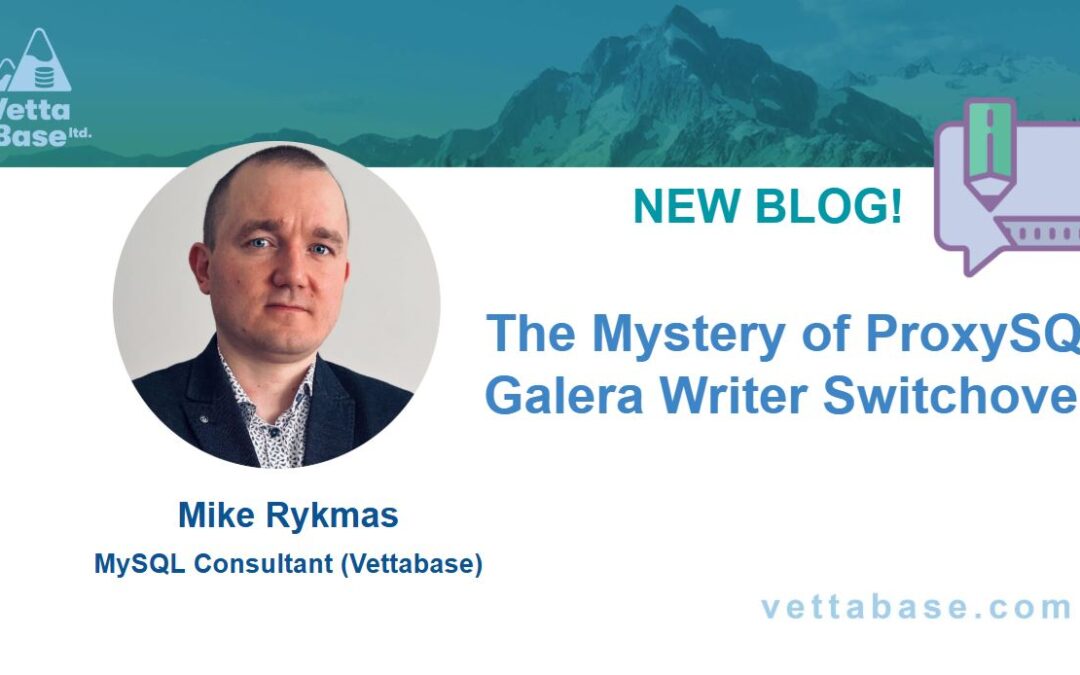For a very long time, the EXPLAIN command remained the same in the MariaDB and MySQL world. It was good enough in most cases, but the community welcomed the implementation of extensions and variants. However, MariaDB and MySQL improved it in different ways. So, if you’re familiar with one of these two databases, and you happen to use the other, you might not be aware of which options you have. And if you come from a totally different technology, you might not know anything about MariaDB and MySQL EXPLAIN. This article is a quick summary.
Basic EXPLAIN
The common implementation of EXPLAIN that we had for centuries shows a table with basic information about how a table is accessed, which indexes could have been used, which are actually used, and extra information. Notes:
- The
Extracolumn shouldn’t be overlooked, as it can contain some very important information: for example, it tells us whether the results are materialised for a two-step ordering. - In a
JOIN, the order of rows should represent the order in which tables are read. But to be sure, check therefcolumn. - Sometimes
EXPLAINgenerates warnings or errors that are actually generated by the query itself, not byEXPLAIN.
MySQL allows to specify a FOR DATABASE <db-name> clause. If the query doesn’t explicitly mention a database name, the tables will be assumed to be in the database mentioned in FOR SCHEMA. This might look like a very minor usability enhancement, but it’s very useful when developing tools that consume the slow log and test the queries. Without this feature, you’d have to modify the query itself, which is not simple if you want to take account of all the syntax edge cases.
Query execution vs approximation
Normally, EXPLAIN runs a query without executing it. This means that some information, like the count of read rows and filtered rows, is approximated, based on the index / table / column statistics. These statistics are usually accurate enough, but since they’re based on random dives into data and indexes, they are occasionally wrong. Under some circumstances, they can also become obsolete over time.
But it’s also possible to execute the query and obtain the query plan with accurate numbers. To do this, we can run ANALYZE with MariaDB, or EXPLAIN ANALYZE with MySQL.
Very old versions of MySQL (up to 5.5, I believe?) used to run subqueries contained in EXPLAIN. If I remember correctly, this was one of the very first flaws eliminated by MariaDB. It was a problem that could lead to long EXPLAIN execution times, especially when the subquery was not optimal and it was executed once for every row returned by the outer query.
Explaining a running query
Some queries are occasionally slow. This means that the optimiser sometimes chooses a good plan, but sometimes it doesn’t. This can depend on at least two factors:
- The query parameters. For example,
WHERE date < '2020-01-01'might be much slower thanWHERE date < '2019-12-01'. A possible reason is that it chooses to use a full table scan even if it should use an index, or the other way around. - But it’s also possible that the same query, with the same parameters, is slow in some situations and fast in others. This might happen because the data change often, and for some reason the statistics are not updated frequently enough.
As a consequence, it might be useless to run the EXPLAIN at a later time. The plan it shows might be different from the one the query actually followed.
To solve this problem:
- MariaDB first implemented
SHOW EXPLAIN FOR <connection_id>; - MySQL implemented
EXPLAIN ... FOR CONNECTION <connection_id>to create an incompatibility, but this syntax was later added by MariaDB, too.
In both cases, the connection id is the same you can get from SHOW PROCESSLIST or various system tables.
Partitions
In MariaDB, and up to MySQL 5.7, a PARTITIONS option was supported. It added a column with information about which partitions were read.
In MySQL 8 this column is always included in the result set.
Query rewriting
In MariaDB, and up to MySQL 5.7, an EXTENDED option was supported. It had the following effects:
- A
filteredcolumn is added. This column shows an estimated percentage of the rows that are filtered by theWHEREcondition. - A warning is produced. This warning contains the query internally rewritten by MariaDB or MySQL. I rarely use it to check if MariaDB applied a subquery optimisation, and probably for no other reason.
In MySQL 8 the filtered column and the warning are always generated.
An example, with MariaDB:
> EXPLAIN EXTENDED SELECT * FROM library.author a LEFT JOIN library.book b ON a.id = b.author_id WHERE b.id IS NULL;
+------+-------------+-------+------+---------------+------+---------+------+------+----------+-------------------------------------------------------------+
| id | select_type | table | type | possible_keys | key | key_len | ref | rows | filtered | Extra |
+------+-------------+-------+------+---------------+------+---------+------+------+----------+-------------------------------------------------------------+
| 1 | SIMPLE | a | ALL | NULL | NULL | NULL | NULL | 14 | 100.00 | |
| 1 | SIMPLE | b | ALL | NULL | NULL | NULL | NULL | 30 | 100.00 | Using where; Not exists; Using join buffer (flat, BNL join) |
+------+-------------+-------+------+---------------+------+---------+------+------+----------+-------------------------------------------------------------+
> SHOW WARNINGS \G
*************************** 1. row ***************************
Level: Note
Code: 1003
Message: select `library`.`a`.`id` AS `id`,`library`.`a`.`name` AS `name`,`library`.`b`.`id` AS `id`,`library`.`b`.`title` AS `title`,`library`.`b`.`author_id` AS `author_id`,`library`.`b`.`genre_id` AS `genre_id` from `library`.`author` `a` left join `library`.`book` `b` on(`library`.`b`.`author_id` = `library`.`a`.`id`) where `library`.`b`.`id` is nullAlternative formats
As we’ll discuss in a moment, both MariaDB and MySQL support a JSON format, and MySQL supports a Tree format.
With MySQL, rather than specifying the FORMAT clause for every EXPLAIN command, you can set the explain_format system variable.
Alternative formats: JSON
Both MariaDB and MySQL support a JSON format, but the way information is formatted is quite different. MariaDB’s JSON format have properties that match the traditional table format’s column, though it nests JOINed tables, UNIONed tables and subqueries in an array.
In both cases, however, the JSON format adds information that is not available in the table format. For example:
- Cost estimations;
- Number of scans for a joined table;
- Number of rows per scan;
- Used columns in an index.
A MariaDB example:
{
"query_block": {
"select_id": 1,
"cost": 0.2229144,
"const_condition": "1",
"nested_loop": [
{
"table": {
"table_name": "a",
"access_type": "ALL",
"loops": 1,
"rows": 14,
"cost": 0.0131368,
"filtered": 100
}
},
{
"block-nl-join": {
"table": {
"table_name": "b",
"access_type": "ALL",
"loops": 14,
"rows": 30,
"cost": 0.2097776,
"filtered": 100
},
"buffer_type": "flat",
"buffer_size": "6Kb",
"join_type": "BNL",
"attached_condition": "trigcond(b.author_id = a.`id`)"
}
}
]
}
}A MySQL example, for the same query:
{
"query_block": {
"select_id": 1,
"cost_info": {
"query_cost": "39.50"
},
"nested_loop": [
{
"table": {
"table_name": "a",
"access_type": "ALL",
"rows_examined_per_scan": 13,
"rows_produced_per_join": 13,
"filtered": "100.00",
"cost_info": {
"read_cost": "0.25",
"eval_cost": "1.30",
"prefix_cost": "1.55",
"data_read_per_join": "5K"
},
"used_columns": [
"id",
"name"
]
}
},
{
"table": {
"table_name": "b",
"access_type": "ALL",
"rows_examined_per_scan": 29,
"rows_produced_per_join": 377,
"filtered": "100.00",
"using_join_buffer": "hash join",
"cost_info": {
"read_cost": "0.26",
"eval_cost": "37.70",
"prefix_cost": "39.51",
"data_read_per_join": "300K"
},
"used_columns": [
"id",
"title",
"author_id",
"genre_id"
],
"attached_condition": "<if>(is_not_null_compl(b), (`library`.`b`.`author_id` = `library`.`a`.`id`), true)"
}
}
]
}
}Alternative formats: Tree
This format is only supported by MySQL. It resembles Oracle’s format. It includes all essential information and it’s easy to read for humans, especially when JOINs are involved. An example:
-> Left hash join (b.author_id = a.id) (cost=38.2 rows=377)
-> Table scan on a (cost=1.55 rows=13)
-> Hash
-> Table scan on b (cost=0.243 rows=29)EXPLAIN in the slow query log
In MariaDB and Percona Server, the slow log can contain the results of EXPLAIN for slow queries. This is not done by default, as this extra content will make the slow log grow. To log the output of EXPLAIN, setlog_slow_verbosity to full, or make sure it is a comma-separated list that contains explain. See Logging all MariaDB and MySQL queries into the Slow Log for more information.
Conclusions
Both MariaDB and MySQL implemented EXPLAIN extensions, though MySQL made this statement a bit more usable. You can use this page as a reference if you work with both MariaDB and MySQL.
Federico Razzoli






0 Comments